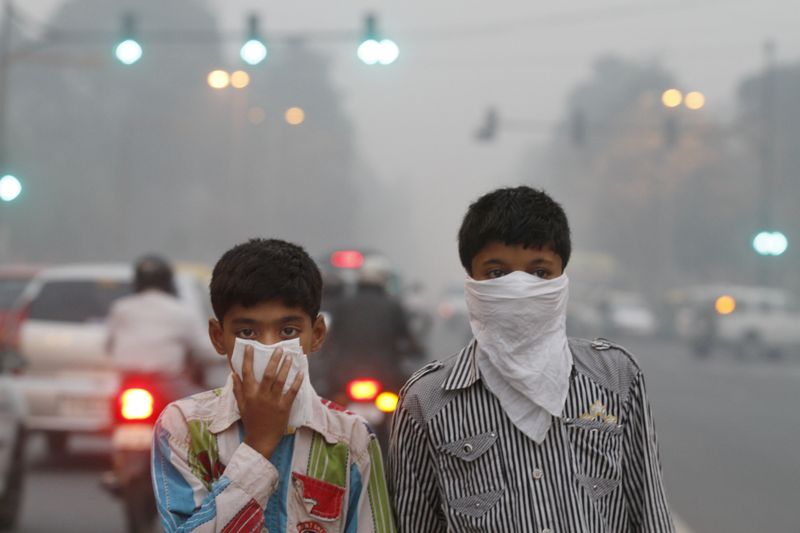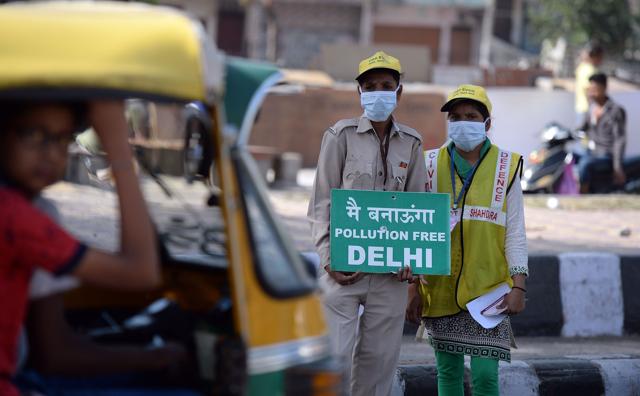
Air pollution shortens your life by 3.4 years, Delhiites worst hit
Source: www.hindustantimes.com
Inhaling minute airborne pollutants reduces the life expectancy of Indians by an average of 3.4 years, with Delhiites losing 6.3 years — the highest among all states.
The drop in life expectancy, according to a new study led by Pune-based Indian Institute of Tropical Meteorology (IITM), is a point of concern as “future increase in PM2.5 (particulate matter of less than 2.5 microns that can inhaled into the respiratory system) concentration may worsen the situation”.
In addition to Delhi – ranked 11 most polluted cities globally by the World Health Organisation last week – air pollution is cutting the lives of those living in polluted states of West Bengal and Bihar by 6.1 years and 5.7 years respectively.
The study conducted by the IITM and Atmospheric Chemistry Observations and Modeling Laboratory, National Center for Atmospheric Research, Boulder, Colorado, USA was published in Geophysical Research Letters.Based on the new population census 2011, the study found PM2.5 exposure has killed 5.7 lakh Indians every year, and 31,000 people died owing to chronic obstructive pulmonary disease (COPD) caused by inhaling ground-level ozone (O3).
Investigators have put the economic burden of estimated premature mortalities associated with the exposure of the two pollutants in the country at about 640 (350–800) billion USD in 2011 – a factor of 10 higher than the total expenditure on health by public and private expenditure which stood at approximately 60 billion USD.
“Rapid expansion of industrial, urban, and traffic emissions has significantly increased the air pollution, especially over the past two decades,” said Sachin Ghude, principal investigator, IITM. “Upward trends in transportation, industrial and energy sectors, urbanization, population growth in India, along with climate change, will raise the levels of O3 and PM2.5 in the future, which could worsen the vulnerability of a growing population.”
According to a report by the Central Pollution Control Board (CPCB), about 78% of the total 141 cities in India exceed the PM2.5 standard, 90 cities have critical levels, and 26 have the most critical levels, thereby exceeding the PM standard by over 3 times. “This is a national health crisis because so many people are dying prematurely and therefore losing lot of productive years. It’s important to integrate health cost with policy-making. The government needs to act on an emergency basis, and come out with a time-bound clean air action plan,” said Anumita Roychowdhury, executive director, research and advocacy, and head of the air pollution and clean transportation programme, Centre for Science and Environment, Delhi.
Among the states, Uttar Pradesh had the highest premature mortalities owing to PM2.5 exposure at 15% in India, followed by Maharashtra (10%), West Bengal (9%) and Bihar (8%). Similarly, ozone-related mortalities owing to COPD was maximum in UP (18%), followed by Bihar (11%), West Bengal (9.5%), and Maharashtra (7%) and Andhra Pradesh (7%).
Economic cost because of premature mortality of PM2.5 and O3 exposure is largest in Uttar Pradesh (98 billion USD), followed by Maharashtra (62 billion USD), West Bengal (57 billion USD), and Bihar (53 billion USD).
Premature moralities linked to ischemic heart disease among adults older than 25 years, caused by stroke, COPD, and lung cancer are estimated to be about 250,000, 190,000, 120,000 and 2700 respectively. Likewise, premature mortalities owing to acute lower respiratory illness for children below five years are estimated at about 7,300.
“Different international scientific communities come up with different numbers without taking into account local information. This study will help policy planners to propose or impose emission controls to benefit reduced public health risk due to exposure to outdoor air pollution,” said Ghude.
Photo by Sanjeev Verma/Hindustan Times via Getty Images

